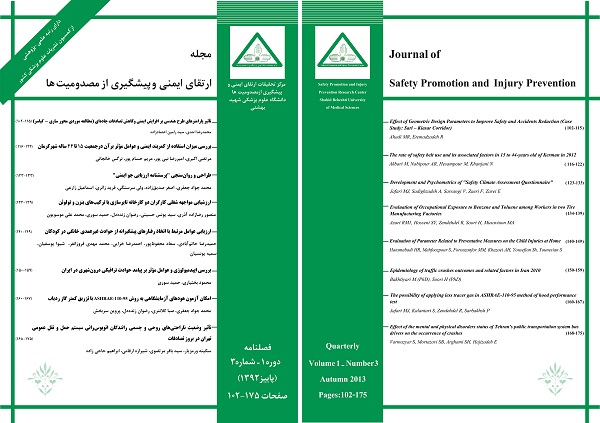...
ارتقای ایمنی و پیشگیری از مصدومیت ها,
دوره 1 شماره 3 (2013),
17 December 2013,
صفحه 102-115
https://doi.org/10.22037/meipm.v1i3.5440
Background and Aim: Traffic accident is one of the main causes of mortality in Iran. The damage and injury caused by these accidents threatens human societies severely. Rural accidents are often more severe and show harsher consequences because the operational speed is higher on rural roads and highways. World statistics presented by World Health Organization (WHO) reveal that about 25 percent of all injuries in the world are caused by traffic accidents. Appropriate diagnoses and treatments of traffic black spots, prioritization, defining proper safety countermeasures and geometric design improvements are the main objectives of this study.
Materials and Methods: In this study, geometric design parameters are verified in black spots to determine which deficiency is the main cause of safety problem. Sari – Kiasar corridor, which is a rural road, is selected as the case study.
Results: Because of the fact that the general topography of Sari – Kiasar corridor is mountainous, the geometric design parameters are very diverse. Thus, after evaluation of geometric parameters, black spots are determined according to the types of accidents, severity of accidents, rate of accidents and the collision scenario. These items are then verified and studied in detail.
Conclusion: Results of the assessment show that geometric parameters such as horizontal and vertical curves, poor pavement, poor shoulder quality and poor drainage are contributing factors in increasing accident risk.
How to cite this article: Ahadi MR, Etemadzadeh SR. Effect of Geometric Design Parameters to Improve Safety and Accidents Reduction (Case Study: Sari – Kiasar Corridor). Irtiqa Imini Pishgiri Masdumiyat (Safety Promotion and Injury Prevention).2013; 1(3):102-115.
